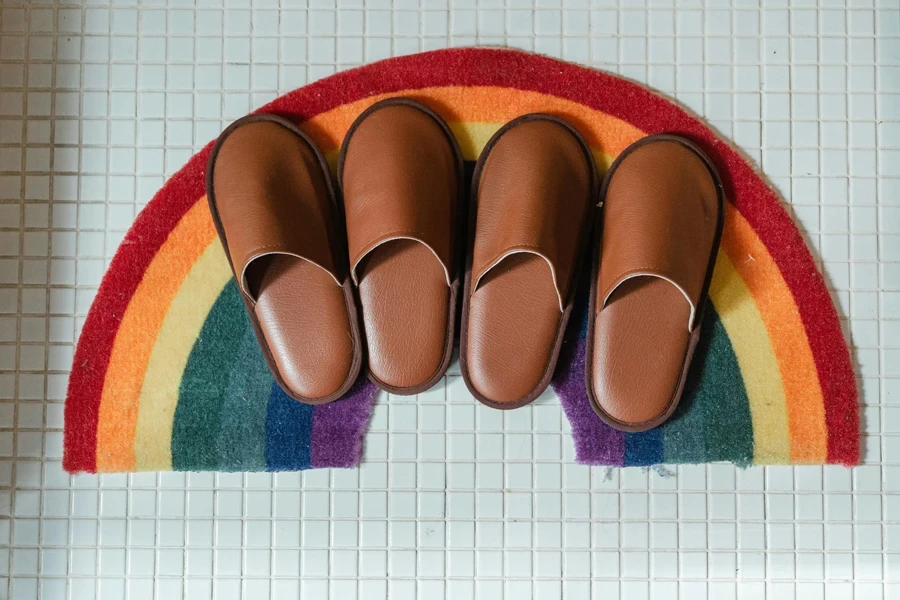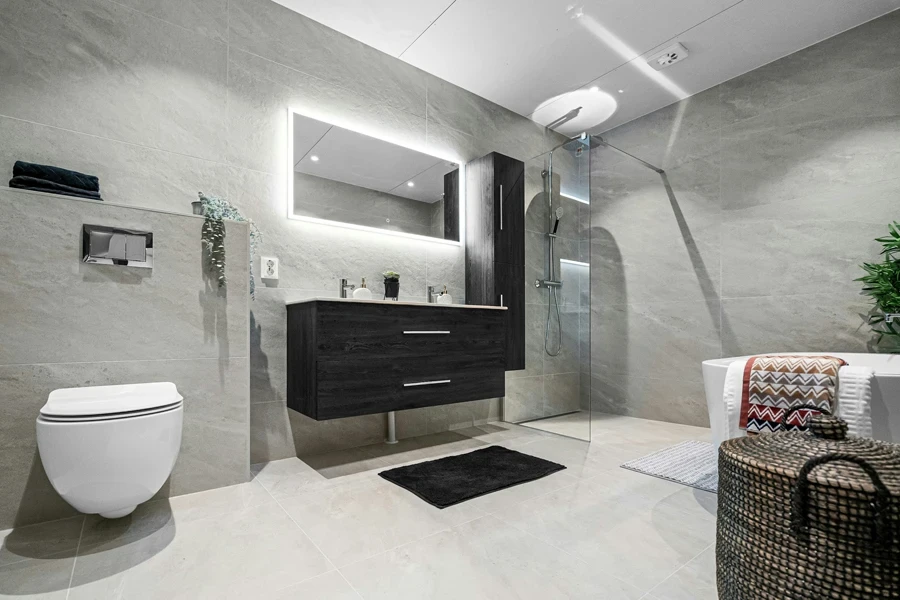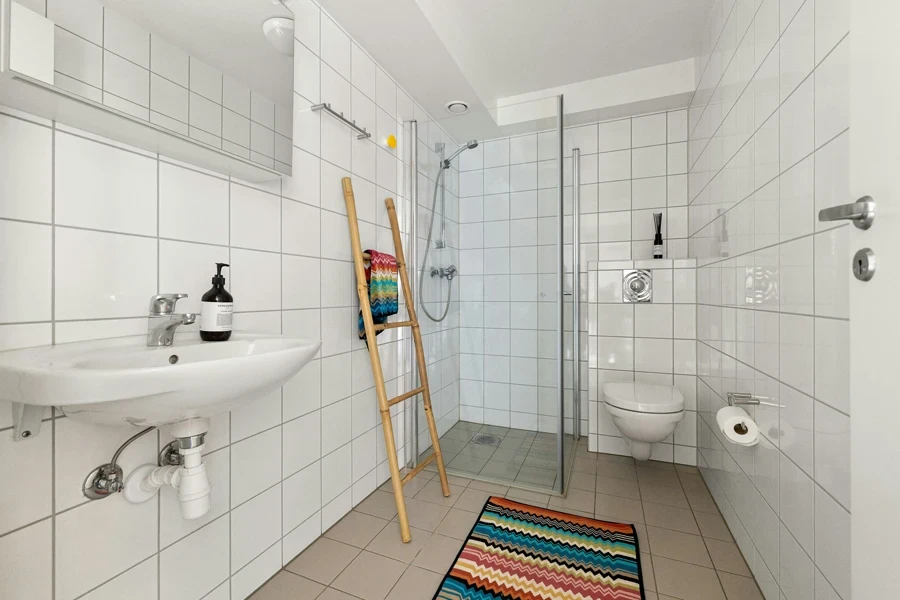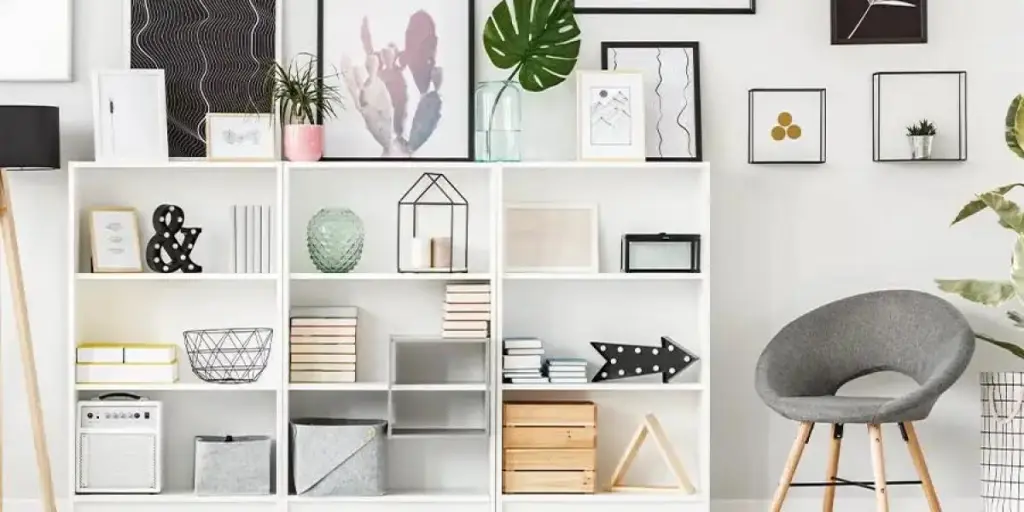Table of Contents
● Market overview
● Key design and material innovations
● Top sellers driving market trends
● Conclusion
Bath mats have become essential bathroom accessories that blend function and style, catering to the modern consumer’s need for safety and sustainability. With innovations in eco-friendly materials like bamboo and cotton, they offer practical solutions while enhancing bathroom aesthetics. The growing demand for personalized and quick-drying mats is pushing retailers to expand their product lines with customizable and technologically advanced options. Brands that prioritize non-slip features and moisture control are driving market growth, ensuring a safer and more luxurious experience for users. Retailers must adapt to these trends to stay competitive in the evolving bath mat market.

Market overview
The bath mat industry in the United States is seeing a rise in popularity due to the increasing interest in eco-friendly and high-quality products among consumers. According to Technavio’s data projection from 2024 to 2028, the market is expected to increase by $91.48 million with a growth rate of 4%. A large part of this expansion is linked to the household sector, where bath mats are considered essential for safety and for enhancing the overall look of a space. It’s becoming more common for shoppers to opt for eco options such as cotton and bamboo mats that have practical uses and follow the current sustainability wave. This change prompts stores to broaden their product range by adding eco items.
The growth of organized outlets, both physical stores and online platforms, also plays a role in expanding the market. Prominent retail chains and e-commerce websites are making it easier for customers to access a variety of bath mats that include personalized and high-end choices. As per Technavio’s report, projections for the household sector are expected to exceed $276 million by 2024. The increasing focus on bathroom safety measures like slip resistance and moisture control features is influencing consumer preferences significantly. These aspects are identified as crucial factors driving market expansion up to 2028.

Key design and material innovations
The bath mat industry has experienced recent progress in design and material enhancements. With the emergence of eco-friendly and biodegradable options like organic cotton, bamboo, and diatomaceous clay, their sustainable properties are gaining popularity. Bamboo and diatomaceous clay offer antimicrobial and effective moisture management appeals to environmentally conscious consumers seeking to lessen their ecological footprint. Towelogy suggests that bamboo and wooden mats add a touch of style and provide practicality as they are naturally resistant to mold and mildew.
In the realm of bath mats’ advancements lies innovations, like anti-slip features and moisture-wicking capabilities, gaining significance in the market today. The demand for materials such as microfiber and rubberized backings alongside memory foam is soaring due to their ability to offer both comfort and safety in wet settings. Microfiber stands out for its drying nature and excellent absorbency that helps maintain floors while ensuring a plush feel underfoot. In contrast, memory foam mats deliver added cushiony comfort, making them a top choice for consumers seeking coziness. Real Simple reports that memory foam bath mats have become trendy because of their plush feel and effective water absorption capabilities; however, it’s important to dry them to avoid getting too wet.

Customization has become a top choice among consumers who are now favoring personolized bath mats that complement the style of their homes more. Choices for customization range from monograms to unique color combinations and patterns designed to suit individual preferences. Saral Home reports that numerous brands now provide reversible bath mats, allowing consumers to update their bathroom appearance by turning over the mat.
Manufacturers increasingly emphasize sustainability by incorporating recycled materials and eco-friendly production methods into their practices. This is in response to consumer demand for eco-products, like bath mats free of harmful chemicals and made in environmentally conscious ways using certified processes to ensure quality and safety standards are met.
The market growth is fueled by advancements like quick-drying technology and materials that regulate temperature and add anti-bacterial properties. All are designed to enhance user experience and convenience in everyday life situations. For instance, dry mats made of clay are created to quickly remove moisture and lower the chances of mold or mildew formation in bathrooms. Anti-bacterial treatments in bath mats help maintain a healthy bathroom environment by preventing microorganisms from thriving, making these mats an excellent choice for households that prioritize health and cleanliness.

Top sellers driving market trends
Top bath mat brands, like Bed Bath & Beyond and Wayfair, are leading the way in the market with their varied product lines that cater to changing consumer tastes. IKEA and Gorilla Grip are also known for their customer-friendly options and extensive range of bath mats. These companies prioritize creating products that blend comfort, safety, and eco-friendliness, making them major contenders in the industry.
Memory foam bath mats have gained popularity among buyers looking for a blend of luxury and coziness in their bathrooms. These mats offer softness underfoot as they are crafted to soak up water for a luxurious spa-like feel. As reported by Real Simple, memory foam mats feature sumptuous textures and long-lasting quality, making them a preferred choice for those seeking to elevate the elegance of their bathrooms. They are notably sought after in contemporary bathroom settings, and these mats have captured the attention of discerning consumers.
Anti-slip mats are a top choice among families with kids and elderly individuals for their safety benefits in preventing slips. They help prevent falls at home, particularly in bathrooms where wet floors can be risky areas to navigate easily. Saral Home emphasizes the growing significance of anti-slip mats in homes, prioritizing bathroom safety while maintaining a stylish appeal without compromising functionality. These mats are available in various designs and colors to complement bathroom decor.

Sustainable choices such as drying stone and bamboo mats are becoming increasingly popular with consumers who value eco-friendliness and sustainability in their purchases. These mats possess unique features and assist in preventing moisture accumulation in bathrooms, making them a convenient and environmentally friendly option. For example, bamboo mats offer a modern appearance while guaranteeing strength and simple upkeep. As per Towelogy’s findings, stone mats crafted from substances such as diatomaceous earth are created to dry rapidly, avoiding the formation of mold and mildew, and attracting eco-conscious customers.
Retail companies are taking advantage of these developments by embracing omnichannel tactics and providing various choices to customers. By blending online and physical store shopping experiences seamlessly, companies like Wayfair and Bed Bath & Beyond are satisfying the needs of a wide range of consumers. Customized options such as doormats or tailor-made color choices are gaining traction, enabling shoppers to incorporate their special flair into their bathroom design styles.

Conclusion
The bath mat market is undergoing significant growth, fueled by innovations in materials, design, and a rising focus on sustainability. To stay competitive, retailers must expand their offerings to include eco-friendly, safe, and customizable bath mats that cater to the evolving preferences of today’s consumers. Emphasizing personalization and sustainable options will help brands meet the increasing demand for functionality and style in the bathroom space.




